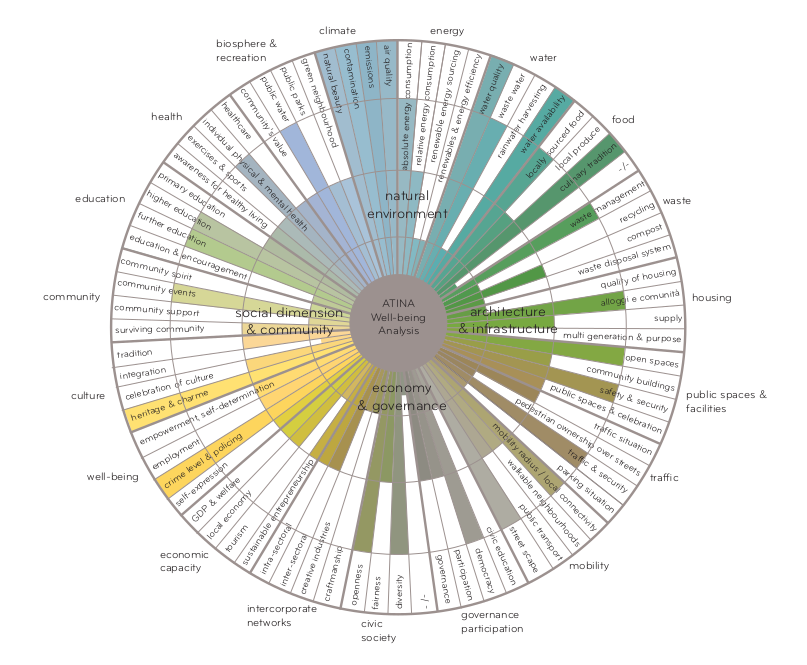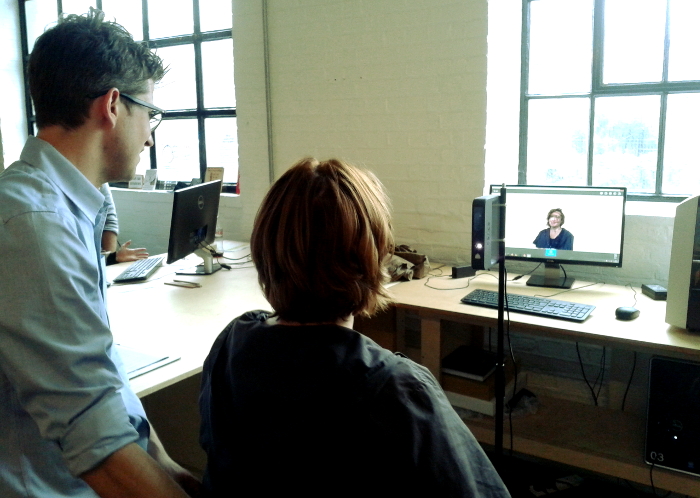As 2015 draws to a close, I would like to share a number of reflections on how I see Clear Village developing in the years ahead.
The first theme I would like to touch on is the relationship between participatory design and technology. Until now Clear Village has been viewed primarily as a participatory placemaking organisation. We have been pioneering some new datasets around well-being, alongside other players such as the New Economic Foundation, in order to map out the landscape of the desired and expected within communities. However, the process to date has been largely analogue. Even though our interest in tech has been present from the get-go, we didn’t have the possibility to introduce it aggresively in our projects, as it would have meant adding two new elements to an equation for clients or communities. What has changed in the past 18 months is that the pervasiveness of social media and the way people consume information have changed even in the most remote communities. A lack of digital literacy, so often a challenge in the past, is increasingly a non-existent barrier and not having tech on our side now makes us look as if we’re not using what’s available.
It has been our intention through our so-called PlaceScan project to convert analogue into digital data as a first step to improving the ease of use of the qualitative analysis and perceptual reporting that we do in the places we work in. In addition to that, we aim to build bridges with other data players to empower participatory placemaking further. The era of civic technology is just at the beginning of showing what it can do for people. There are of course legitimate concerns around providing data to third parties because of the classic big brother syndrome. Nonetheless, I believe that we are at a pivotal moment where citizens can become engaged with developing the data that will unleash their creativity and enable them to take greater ownership in shaping their own neighbourhood- or conversely, if they do not seize the opportunity, they will run the risk of becoming just observers of automation and of becoming alienated from decision-making processes. For this reason it is almost a civic obligation to become smart citizens empowered by good data, which is why I think there is great value in strengthening the connection between Clear Village and the Machines Room maker space that I also founded: a space that aims to equip people with the knowledge and the tools to fabricate their ideas and thus raise their potential to solve complex local or global issues, whether they are social, environmental or other. My hope is that Clear Village and the Machines Room will increasingly enter into collaborations and perhaps merge their capacities to some extent, as was demonstrated during the Recode the City Festival that took place in September this year.

The second topic I would like to discuss is the opportunity to work with developers and also in the Americas, particularly in the Rust Belt. Clear Village’s work until now has focused mainly on generating projects that pilot the thinking of participatory placemaking. This has resulted in a number of deeply rewarding projects, like Small Works and the Walled Garden, which in the last few years have collectively raised over £1.5million in grants as well as a great deal of goodwill. The evidence of the impact of this type of work is becoming more substantial and thanks to this dynamic I have been able to explore consulting activities for Clear Village that will provoke and stimulate the ability of developers to integrate a better social and perhaps also environmental understanding in the places they are responsible for. This will make for a very different client group from the one we are used to.
Until now we have worked predominantly with social landlords or organisations with a social mandate, but going forward we will increasingly work with organisations that do not have a social mandate but that will need to have one to perform better. The traditional 7% yield that developers seek is not only challenged by a volatile economy but also by reputational competition; well-being and social innovation are quickly catching up with green and eco-design as the next big thing that developers need to consider if they want a longer-term more stable return on investment. For example: US-based development company Delos will be developing a $2billion project in Tampa, Florida to create a health- and wellness-focused city district. Whether this is speculative or realistic through a top-down approach is not the point; what is important is that major players are starting to appreciate the value in being more socially progressive. This, in any case, is the impression I have after taking part in the Clinton Global Initiative in New York, Techonomy Detroit and City Lab London.
As well as needing to change their approach to social questions, developers also need to invest in activating spaces both before and during their spatial interventions. The first category is well-known as pop-up or meanwhile projects, which we have been involved in in various locations. The second category is not a new-comer as such, but has been changing substantially in recent times. Most developers have an imperative to create a sustainable rent and to attract the right lessees. In order to do so, they are looking at ways to attract certain demographics which are active and creative, such that they can not only pay the rent but also generate positive externalities for the places they live and work in. The major new development in this category is a combination of co-working and maker spaces, which exhibit an extraordinary variety of opportunities ranging from the cultural, to the educational, to the economic.

In the light of this, I have been in conversations with various developers in London and also in the US, especially in cities affected by deindustrialisation. Part of the vision of the Lime Wharf, which I founded several years ago, was to create a cultural place with a strong connection to the future of technology: and in doing so, to help reindustrialise the area around Vyner Street in East London. The essence of Vyner Street today is that it is the densest maker street in London and a key part of the Maker Mile, which connects a vibrant cluster of digital and analogue fabrication spaces and companies. Our friends at New Lab in Brooklyn and many other organisations like We Work, General Assembly and others are helping American cities through the same process of capturing the potential of maker culture, which inherently veers towards greater resilience and a circular economy. I have just come back from Cleveland and Detroit and expect to be consulting with local authorities and developers to provide our expertise on this subject. What is particularly exciting about this trend is that it is not an exclusive one; it is one which can be applied to cities in the developing world just as well, if not more so, as our connection with the Maker Library Network demonstrates. It makes for an inclusive development strategy that is applicable for neighbourhoods across the board: those in dire straits that are interested in DIY and frugal solutions, as well as affluent neighbourhoods wanting to excite the curiosity of locals or develop leap-frog solutions and exponential technologies.
The third topic I wanted to touch on is our ambition to expand our current work. Our flagship projects- our Small Works spaces in central London and our Walled Garden project in Havering- are proceeding apace. I believe that we have got better at creating social impact, at measuring it, and at working in partnership with a range of fantastic partner organisations and stakeholders. As an organisation that views itself as a catalyst, our goal now is twofold. On the one hand: to grow our projects to a scale where they are sustainable. And on the other hand: to enable local people and organisations to take ownership of them. We are increasingly seeing ourselves as a programmatic entity that can recode an environment, bring change in a way that strives to be replicable, and help to create a story that can then be owned by a community organisation. Our larger projects have reached a certain maturity, and the goal now is to accompany them the final steps of the way to community handover.

Fourthly and finally, I am delighted to announce that my book “Recoded City: Co-Creating Urban Futures”, co-authored with Lucy Bullivant and published by Routledge, will be launched on 11th January. Through a combination of essays, cases and voices, the book aims to explore what participatory culture and distributed urbanism can achieve. Its role is not just to be a catalogue, but also to provide a call to action. At a time where we’re clearly seeing the consequences of poor neighbourhoods and social exclusion, for instance through radicalisation processes, it is becoming more and more evident that the places we look at the least tend to end up being the most expensive to look at. Social media provides people with a myriad of instant information and opportunities, including the wrong ones, and this makes it imperative to find new ways to build well-being especially on the fringes of society. New technologies are leading to a convergence of opportunities, but also problems, in the dark spots of societies. A lack of education combined with a dearth of opportunities means that places are designed for distress, the consequences of which need to be paid for by society as a whole. These problems need to be tackled: and I believe that they are best tackled not through a centralized plan but through the sort of distributed self-organising activity that lies at the heart of the recoding process described in my book.
2016 promises to be an exciting year for Clear Village: with an increased focus on technology, the developer context, opportunities in North America, and the latter parts of the catalytic process leading to community handover. I would like to extend a big thank you to our partners, team and volunteers for everything that’s been achieved and I’m looking forward to continuing our shared journey in the new year.